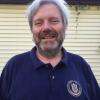The college experience -- and the Catholic college experience especially -- can influence a young man's decision toward considering a priestly vocation, according to a study issued in early July by Boston College.
Among the factors that have helped sway a man's decision to enter priestly life are access to clergy at the college as well as access to the Mass and other elements of Catholic life.
"College Experience and Priesthood" distills a Boston college-hosted summit last year on priestly vocations, as well as research conducted in 2012 by the Center for Applied Research in the Apostolate at Georgetown University in Washington. Both Boston College and Georgetown are Jesuit-run institutions.
In January 2012, Boston College and the Jesuit Conference USA commissioned CARA to assess the impact of Catholic higher education on the vocational discernment of men entering the seminary and religious life in the United States in an effort to identify what led them to the seminary and/or eventual ordination.
At the summit, attended by about 90 people, including bishops and university leaders from around the country, participants were urged to develop a consistent framework for inviting young men to consider the priesthood.
"It really starts with us who are clergy and vowed religious," said Jesuit Fr. William Leahy, Boston College's president, in an address during the summit. "There is nothing as powerful as happy, fulfilled priests and religious. That is contagious. That attracts. If we are not happy, fulfilled, ready to recruit others, they will not follow us. We know that as a group, priests are happy in their ministry."
Leahy urged the establishment of priesthood support groups on Catholic college campuses.
"These are often led by the president, lending certain seriousness to the effort, but they could also be led by a campus minister or a faculty member," he said. "Students who are thinking about priesthood often feel isolated. If they can be part of a group that meets once a month, have time for prayer and conversation, and hear the vocation stories of others, they will feel encouraged, and can confirm a sense of direction."
Like baseball scouts, Leahy said, "we need people who will identify individuals who have talent, inclination, and desire, who can be pointed in the direction of priesthood and religious life."
Seminary enrollment peaked 50 years ago at about 47,000, took a steep dive in the decade that followed, and continued a steady decline until the mid-1990s and appears to have leveled off since then to just over 5,000 students.
Not all who are enrolled at seminaries, though, are ordained to the priesthood. "We need about 200 more ordinations per year to return to stability," said Mark Gray of CARA at the summit.
While about 7 percent of the U.S. Catholic population attended a Catholic college, 44 percent of ordinands did, according to research by CARA.
Gray profiled those who pursue a priestly vocation as having been active in a parish youth group, attended a Catholic high school, encouraged to consider vocation by one or more people, personally knew clergy and religious, and attended a World Youth Day or a National Catholic Youth Conference. He added high school is the period when many young men report thinking seriously about priesthood, and that college seems to be an "amplifier" to these earlier experiences.
Priests who went to Catholic colleges engaged in more of every kind of spiritual practice than those who went to non-Catholic colleges except for Bible study. Majorities of those attending Catholic colleges reported participating in the rosary, eucharistic adoration, other individual prayer, the Liturgy of the Hours, Bible study and Holy Hours.
According to CARA, 91 percent of ordinands who went to Catholic colleges had daily Mass easily available to them, compared to 49 percent of those who had attended non-Catholic colleges. "Many at non-Catholic campuses had to go off campus to attend Mass," Gray said.
"Those who attended Catholic colleges were much more likely to encounter priests, brothers and sisters. Of particular note is that 88 percent of them had a priest as a professor, in contrast to only 18 percent of those at non-Catholic colleges," he added.
"Friends and roommates are also reported to be influential in vocational discernment," said the Boston College report, which also included past CARA research conducted on priestly vocations for the U.S. bishops. "Those who attended a Catholic college are substantially more likely than those who attended a non-Catholic college to report being influenced and supported by their roommates and friends in their vocation discernment and choice."
For bishops and religious superiors, diocesan and religious order vocation directors, college presidents, mission officers, leaders in student affairs, and directors of campus ministry, "a strategy for encouraging vocations to the priesthood must be a collaborative endeavor among these leaders in the church today," the report said.
Tactics to encourage vocations, though, can differ from diocese to diocese.
When it comes to encouraging vocations within the Hispanic community, summit participants were reminded of the importance of evaluating current communication and outreach efforts in Hispanic communities, and recruiting people from within these communities to be part of diocesan and parish pastoral work.
One bishop at the summit "described how his diocese took on a seminarian's (student) debt with the understanding that the young man would pay it off if he chose not to continue to ordination," the report said. "This and other strategies may assuage the concerns of those who delay ordination due to student debt."

